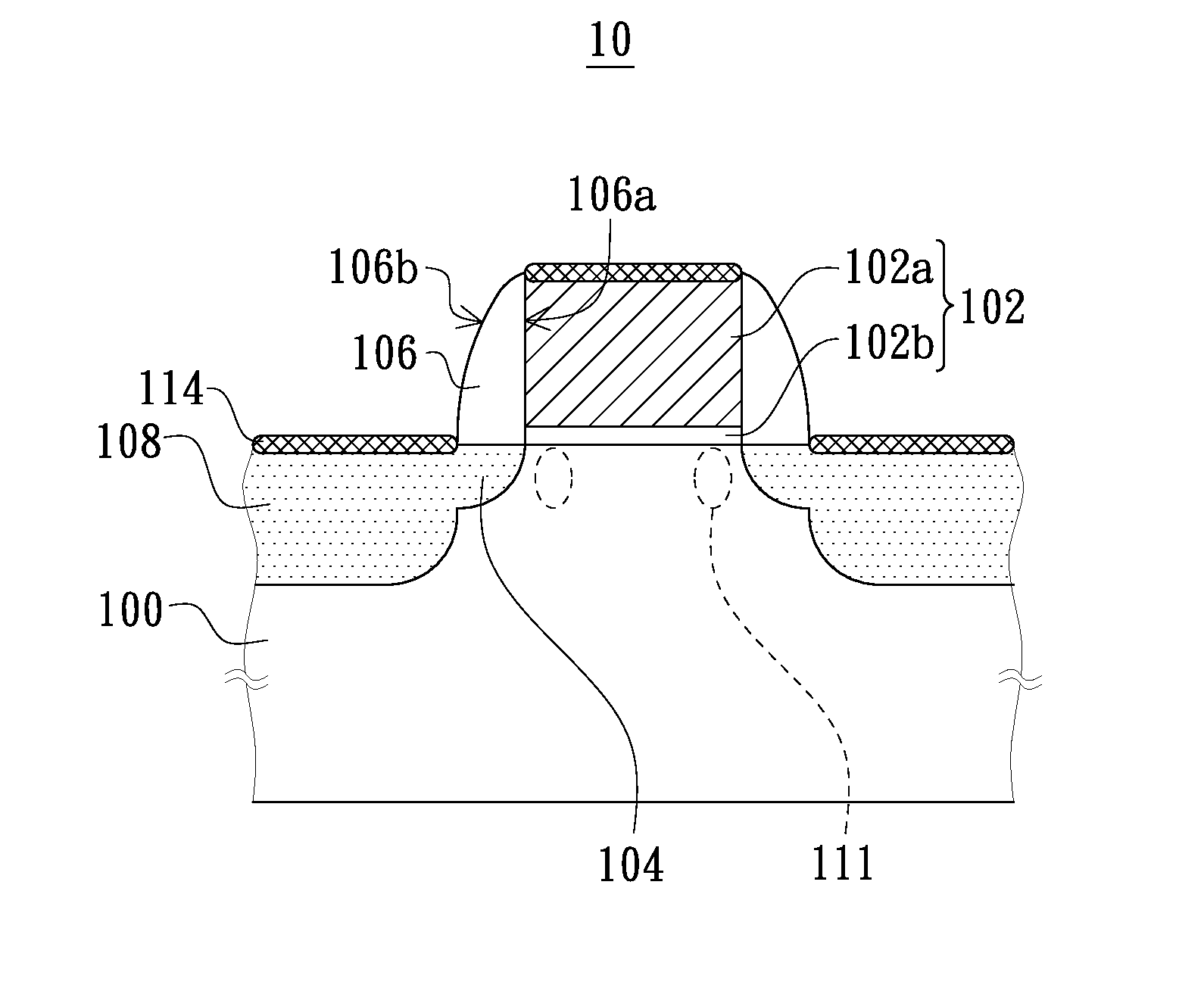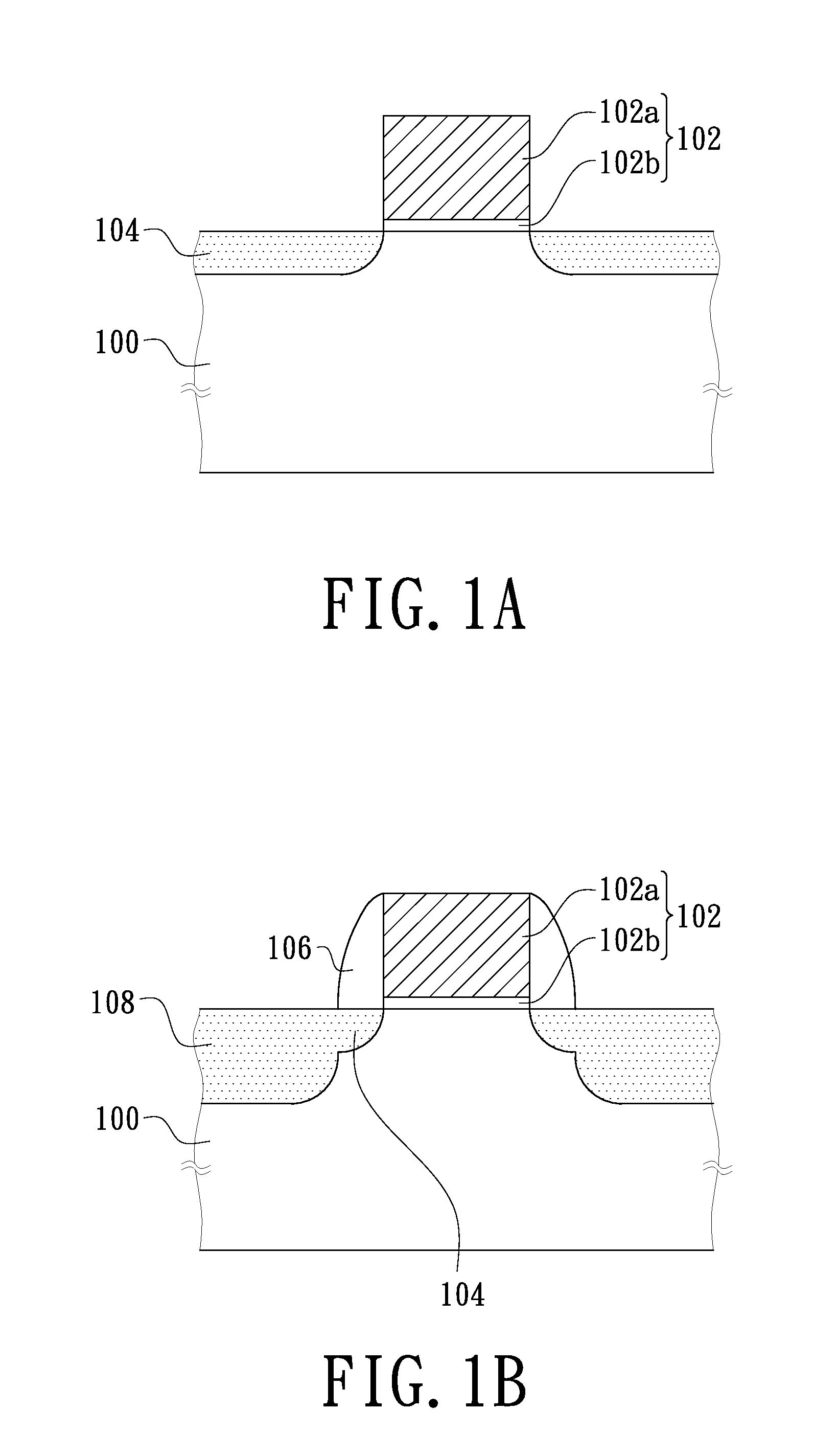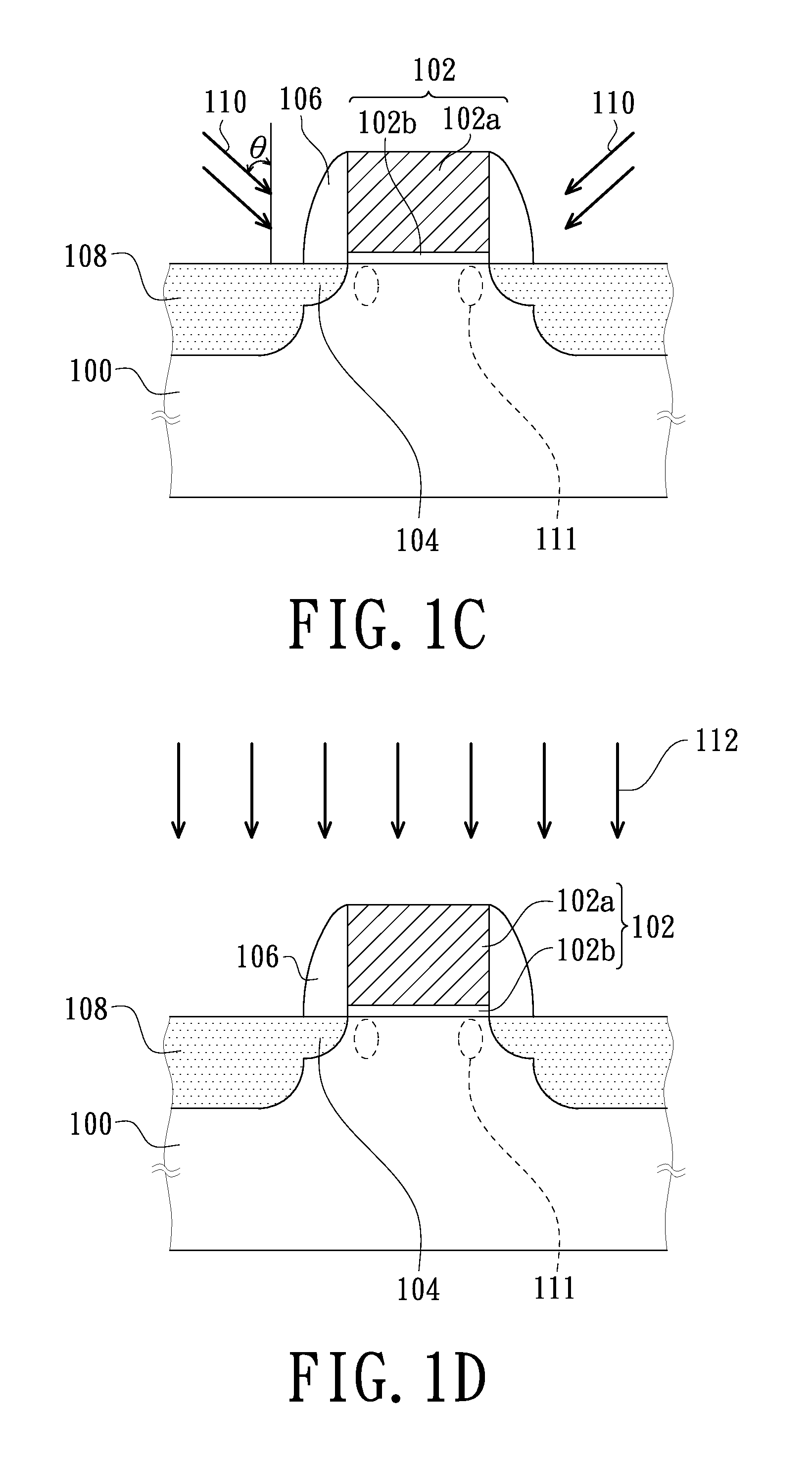Semiconductor device with carbon atoms implanted under gate structure
a technology of carbon atoms and semiconductor devices, applied in the direction of semiconductor devices, electrical devices, transistors, etc., can solve the problems of generating a lot of defects at the surface of the source/drain region, piping and spiking problems of nickel silicide, and achieving the effect of improving the junction leakage phenomenon
- Summary
- Abstract
- Description
- Claims
- Application Information
AI Technical Summary
Benefits of technology
Problems solved by technology
Method used
Image
Examples
Embodiment Construction
[0031]FIGS. 1A through 1E are cross-sectional views schematically illustrating a method for forming a semiconductor device according to a preferred embodiment of the invention. As shown in FIG. 1A, a gate structure 102 composed of a gate 102a and a gate dielectric layer 102b is formed on a substrate 100. The method for forming the gate structure 102 can be, for example, comprises steps of forming a dielectric material layer (not shown) and a gate material layer (not shown) over the substrate 100 sequentially and then patterning the gate material layer and the dielectric material layer into the gate structure 102 by using the photolithography process and the etching process. The dielectric material layer can be, for example but not limited to, made of silicon oxide, silicon nitride or silicon-oxy nitride. The gate material layer can be, for example, made of polysilicon or metal. Then, a source / drain extension region 104 is formed in the substrate 100 adjacent to the gate structure 10...
PUM
 Login to View More
Login to View More Abstract
Description
Claims
Application Information
 Login to View More
Login to View More - R&D
- Intellectual Property
- Life Sciences
- Materials
- Tech Scout
- Unparalleled Data Quality
- Higher Quality Content
- 60% Fewer Hallucinations
Browse by: Latest US Patents, China's latest patents, Technical Efficacy Thesaurus, Application Domain, Technology Topic, Popular Technical Reports.
© 2025 PatSnap. All rights reserved.Legal|Privacy policy|Modern Slavery Act Transparency Statement|Sitemap|About US| Contact US: help@patsnap.com



